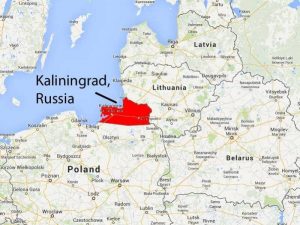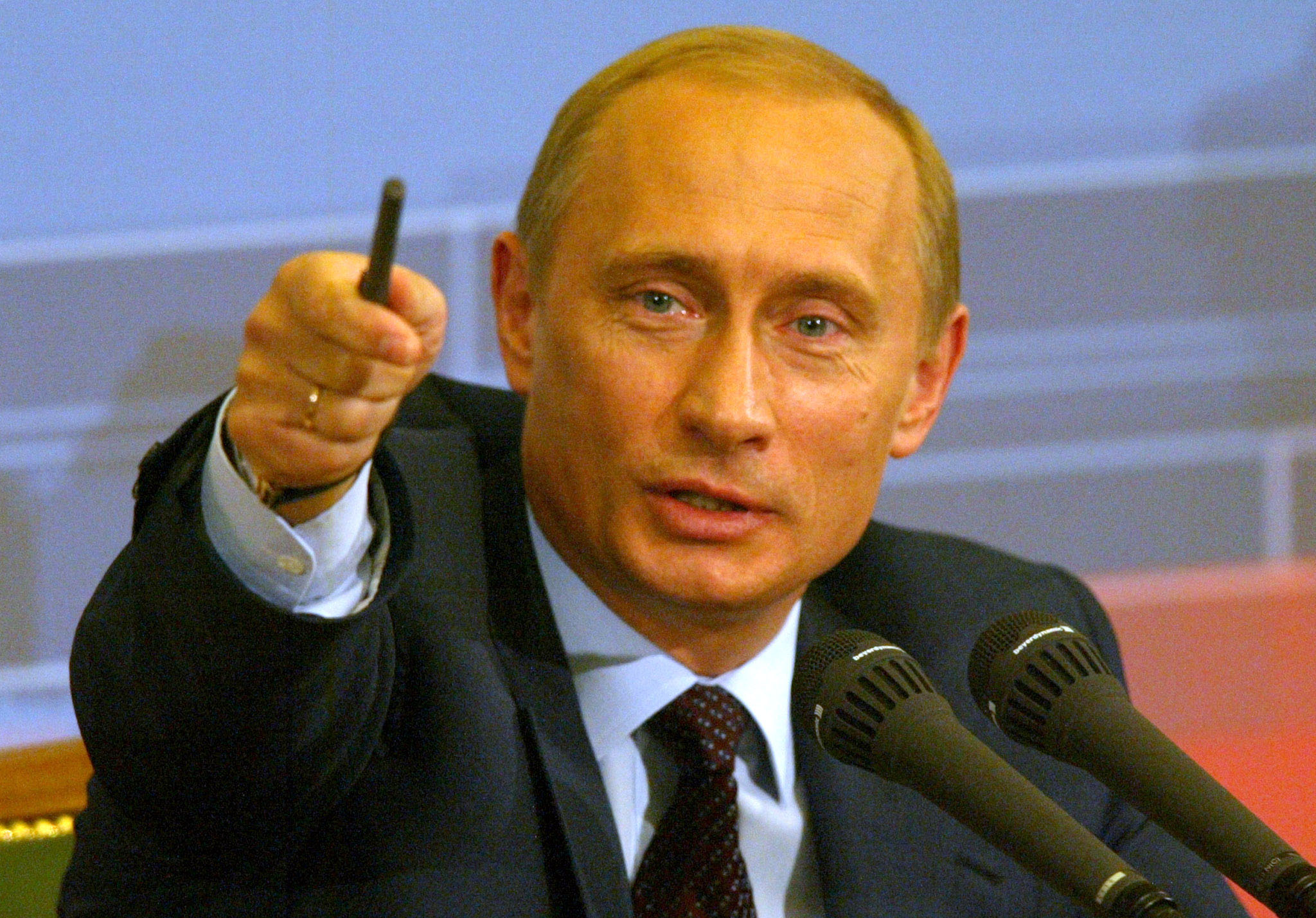This article originally appeared in the Fall 2016 edition of the Georgia Political Review.
By Valtteri Tamminen
Kaliningrad was once the old German city of Königsberg, which fell into Soviet hands during the final months of World War II. In 1946, it was renamed Kaliningrad after the Soviet revolutionary Mikhail Kalinin. When the Soviet Union collapsed, the territory became a part of Russia itself, rather than a part of its satellite states, Poland or Lithuania. Since then, the territory has become the key to Russia’s control of the Baltic Sea Region (BSR), and Russia has armed its bases there to the teeth. Russia sees the Baltic states (Estonia, Latvia and Lithuania) as part of its former empire, during the Soviet Union and before, and thus as within their sphere of influence. However, if Russia were to invade, it would trigger Article 5 of the charter of the North Atlantic Treaty Organization (NATO), and all the alliance members, including the United States, would be obligated to come to the aid of the Baltic states. NATO is currently ill-equipped to deal with a Russian invasion, but there are actions they can take to solve potential dilemma.

Strategically located, Kaliningrad is sandwiched between Poland and the Baltic states and is the only Russian naval base in the Baltic Sea that does not ice over in the winter. The Russian military has particularly focused on Anti-Access and Area Denial (A2/AD) systems, designed to deny adversaries free movement through surrounding territory. This is important because armies are most vulnerable when they are on the move, since they are not as well defended and are concentrated into small areas. Anti-aircraft weapons such as S-400 missiles, which have a reach of about 400 kilometers around Kaliningrad, also make flying reinforcements into the area much harder and costlier for hostiles. Furthermore, Kaliningrad is equipped with Tochka-U tactical nuclear weapons, which can launch nuclear missiles deep into NATO territory and could even reach Berlin if upgraded.
In the past few years, Russia has launched numerous military exercises in the BSR, with Kaliningrad being a main base for the practice assaults. Most notably, practice invasions of the Finnish Åland islands, the Swedish island of Gotland, and the Danish island of Bornholm. Were these operations to be carried out successfully in real life, along with an invasion of the Baltic, they would severely impede NATO’s ability to provide military reinforcements to the Baltic states. Moreover, the troops would be too late to be used for defense and would instead have to counterattack the Russians. The Russian Baltic Fleet, though not large enough to dominate the BSR, is large enough to harass any NATO reinforcements moving into the region, should a conflict break out.
Russia has a history of aggressive actions in the BSR. In March 2013, Russia simulated an attack on Sweden, with six planes “attacking” and only turning away when they were 20 miles from Swedish territorial waters. Eston Kohver, a member of the Estonian Internal Security Service, was abducted in a raid of Estonian border post in September 2014 and taken back to Russia, where he was convicted of espionage and sentenced to 15 years in prison. Sweden launched a submarine hunt after a possible submarine was spotted in its territorial waters in October 2014. An emergency signal on a frequency used often by Russia was picked up by Swedish intelligence but no submarine or wreckage was ever found. Russia has also been involved in hundreds of air incidents over Europe over the past couple of years, with NATO scrambling aircrafts against Russian counterparts over 400 times in 2014 alone.
Following this series of worrying developments and the Russian annexation of Crimea in 2014, NATO and the Baltic states have been on higher alert. Geographically and historically, the Baltic states are in a very similar position to Ukraine. Both were Soviet Republics during the Cold War and both have large Russian speaking minorities left over from Soviet Russification policies. This is especially concerning since Russia has invested a lot of political capital into the idea that it can go anywhere to defend Russian-speaking peoples; they used this argument during both the Russo-Georgian War in 2009 and the annexation of Crimea in 2014. Unrest in the minority Russian-speaking population could become a challenge for Baltic states, especially since there have been problems integrating them into the rest of the populace. Russians account for 25.6 percent of Estonia’s population, 28.8 of Latvia’s, and 6.4 percent of Lithuania’s. More alarming is that a large portion of minorities, 13 percent in Estonia and 18 percent in Latvia, do not hold citizenship of any country. If these minorities feel left out of society in their respective countries, Russia could exploit social unrest.
As Ants Laaneots, former Chief of the Estonian Defense Forces, described it, the Baltic states are the weakest link in the NATO defense system, as they are effectively a peninsula cut off from the West and the North by sea. This is backed up by the Rand Corporation study, which found that Russia could take the Baltic states in less than 60 hours
Surprisingly, NATO lacks a reliable plan against a Russian attack from Kaliningrad. The best NATO response would be to move forces closer to the Baltic states, if not directly into them. Currently, the fastest responding armored unit would probably be the U.S. combined arms battalion, whose equipment is in Grafenwoehr, Germany; however, the troops would have to be flown in from the United States. Moving all of their equipment would likely take at least a week.
Having troops prepositioned in Poland or the Baltic states may be more effective. By running military simulations of a Baltic invasion by Russia, the same Rand Corporation study found that adding six or seven battalions into the Baltic states, including three armored ones, would be enough to hold back the Russians. Given a week’s notice, NATO can move several units into the Baltic states, but not enough to stop the Russians. Moving reinforcements into the Baltic states is also probably something that Russia has foreseen in their own contingency plans.
Especially with airpower, NATO is struggling in the Baltic states. None of the Baltic states have combat air forces, meaning they have no fighters to protect the skies and no bombers to bomb the enemy. To this end, they rely completely on NATO’s Baltic Air Policing to protect them. This program cycles fighter planes from other member countries to defend Baltic airspace. In response to the Crimean crisis, the number of planes only rose from four to around eight at any time, an insufficient increase to really counter the Russians. Adding to this problem, the Baltic states are too thin a strip of land to effectively host fighters and bombers, as the bases they have fall under the Russian anti-aircraft missile bubble. NATO reinforcements could come from Poland, but they would either have to fly straight through the A2/AD of Kaliningrad or go hundreds of kilometers out of their way to fly around it.
This is why NATO wants Finland and Sweden to join the alliance. Both countries could host enough airpower to adequately contest the skies over the Baltic states. Planes hosted in Finland and Sweden would not have to fly through Kaliningrad’s A2/AD bubble and they would have forces they could send to help as reinforcements.
Without Finland and Sweden in NATO, the Lithuanian-Polish border becomes a crucial chokepoint as it is sandwiched between Kaliningrad and Belarus, a nominal Russian ally. Even if NATO could rapidly mobilize reinforcements, it would have to fight its way through the 50-kilometer-wide border, called the Suwalki Gap. If that were not enough, the area is marshy, and its few roads are all well within reach of Russian artillery.
Russia’s emergency fund used to boost government spending when oil prices are low is set to run out of money next year. The country is then going to have to decide to either play ball with the West or increase its military aggression, as it usually does as a distraction when it has economic problems. When the fund dries up, the status quo will change somewhere, one way or another. NATO should be prepared.


